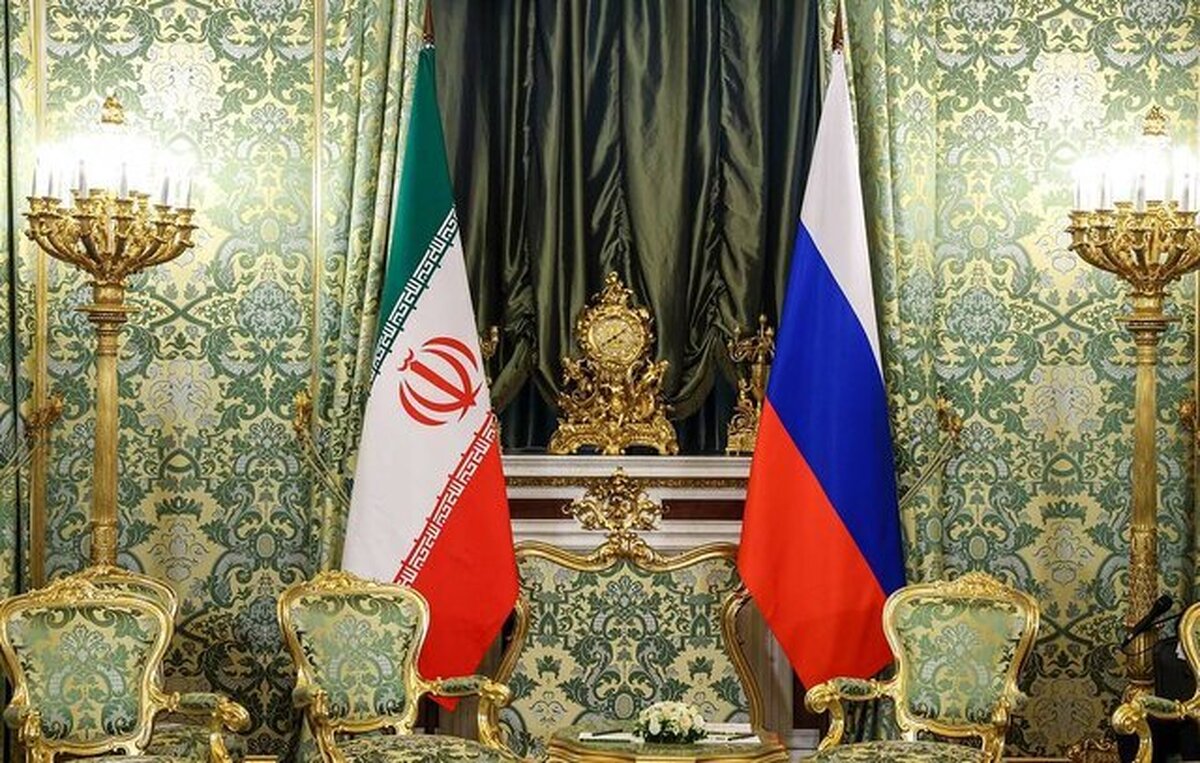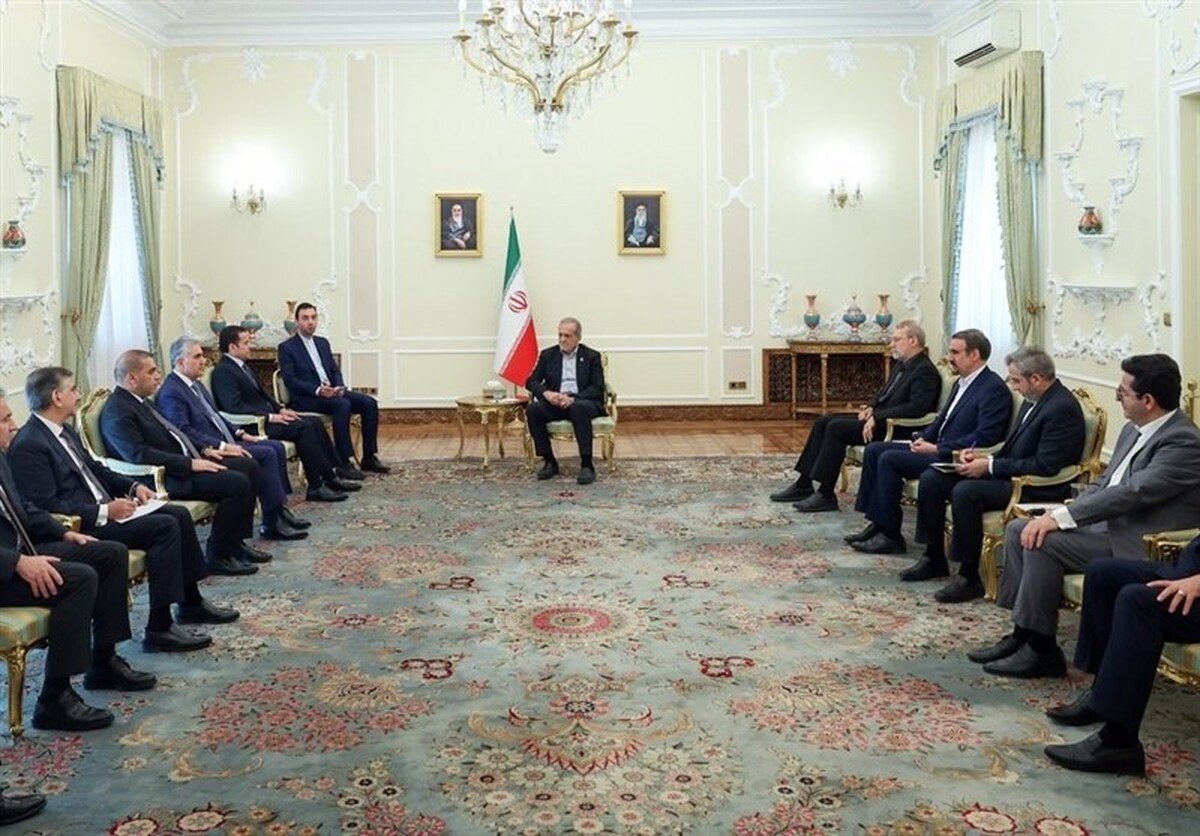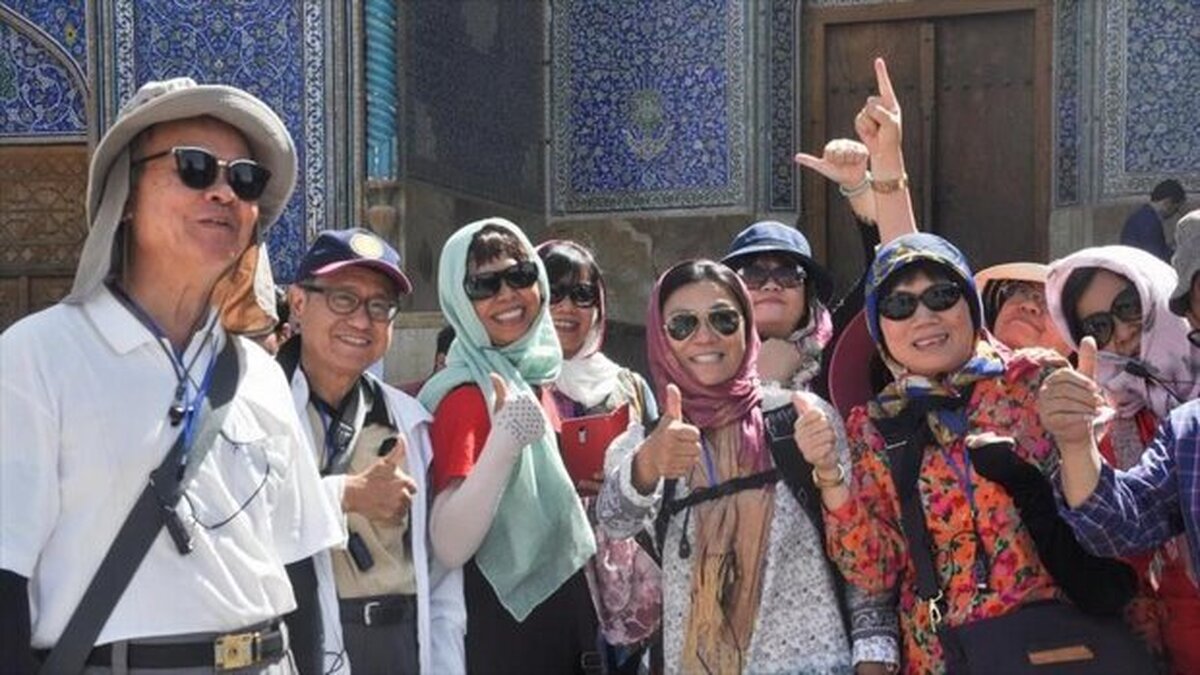
New Railroad Forms Link With Iran’s Major Tourist Hubs
EghtesadOnline: Yazd-Eqlid railroad, a missing link from a triangle connecting three major tourist attractions of Isfahan, Yazd and Fars provinces, recently came on stream.
The railroad was inaugurated via videoconference on July 29 by former president, Hassan Rouhani.
Attending the inaugural ceremony were officials from the Ministry of Roads and Urban Development and the governor general of Fars Province.
According to the deputy head of Construction and Development of Transportation Infrastructure Company affiliated with the Roads Ministry, a total of 60 trillion rials ($235 million) worth of investments have been made into the 270-kilometer-long project, the construction of which started in the fiscal 2011-12.
“One million passengers are expected to be transported via this railroad within the first year of its operation. The figure will gradually increase to three million passengers per year in the following years,” Abbas Khatibi was quoted as saying by the news portal of the Ministry of Roads and Urban Development.
Mohammad Monajjemi, the project manager, told IRNA that the railroad will reduce the distance between Shiraz in the southwest and Mashhad in the northeast by 311 kilometers (four hours).
“This railroad project connects important industrial and mineral hubs of the country along the way and has the capacity to transport 3 million tons of cargo within the first year of its operation. This load will go up to 7 million tons per year within 20 years after its launch,” he added.
Kheirollah Khademi, a deputy roads minister, said passenger and freight trains will move at speeds of 160 kilometers per hour and 120km/hour respectively.
“The railroad will facilitate the transit and transport of freight to the neighboring Afghanistan,” he added.
Yazd Province’s Governor General Enayatollah Rahimi says that with the completion of this missing link, the provinces of Fars, Bushehr, Kohgilouyeh-Boyerahmad, Yazd, Kerman, Hormozgan, Sistan-Baluchestan, Khorasan Razavi and South Khorasan have all been connected.
“Yazd-Eqlid railroad connects transit routes between the country’s southwest and northeast as well as southwest and southeast,” he added.
“Some 33,000 tons of rails and 1.92 million tons of concrete have been used in the project and some 7.7 million cubic meters of embankment have been carried out.”
On the inauguration day, the first iron ore consignment was carried through this railroad from Yazd mines to Pasargad Steel Company in Fars Province.
On the same day, four other rail projects in addition to a freeway project worth 109,100 billion rials ($427 million) were inaugurated.
The railroad projects include a second track for Zanjan-Qazvin as well as Bafq-Zarrinshahr, which consist of 106 and 182 kilometers of railroads, respectively.
The president also marked the end of the track-laying operations of Zahedan-Khash (155 km) and Bostanabad-Tabriz (41 km) railroads.
The Alborz Tunnel, which is located at the highest point of Tehran-North Freeway, at about 2,400 meters above sea level was inaugurated, President.ir reported.
Railroad authorities under Hassan Rouhani’s government set rail infrastructure development as one of its main priorities from the onset. The goal was pursued during Rouhani’s two consecutive tenures.
Railroads have expanded from 10,223 kilometers in 2013 when he first took office to 11,773 kilometers at present.
The figure is estimated to reach 13,000 kilometers by the end of his second tenure this year, IRNA reported.
The total number of rail fleet, including locomotives, cargo, passenger and self-propelled wagons, stood at 25,113 in 2013; the figure is expected to reach 29,804 by the end of Rouhani’s second term in office.
According to the IRNA report, the share of rail in transit stood at 4% in 2013, which has now grown to 9% this year.
The World Heritage Committee has inscribed Trans-Iranian Railway on UNESCO’s World Heritage List.
The move was decided recently during the committee’s 44th session held online and chaired from Fuzhou (China), UNESCO wrote on its website.
The Trans-Iranian Railway connects the Caspian Sea in the northeast with the Persian Gulf in the southwest crossing two mountain ranges as well as rivers, highlands, forests and plains, and four different climatic areas.
Started in 1927 and completed in 1938, the 1,394-kilometer-long railroad was designed and executed in a successful collaboration between the Iranian government and 43 construction contractors from many countries.
The railroad is notable for its scale and the engineering works it required to overcome steep routes and other difficulties.
Its construction involved extensive mountain cutting in some areas, while the rugged terrain in others dictated the construction of 174 large bridges, 186 small bridges and 224 tunnels, including 11 spiral tunnels.
Unlike most early railroad projects, the construction of Trans-Iranian Railway was funded by national taxes to avoid foreign investment and control.




